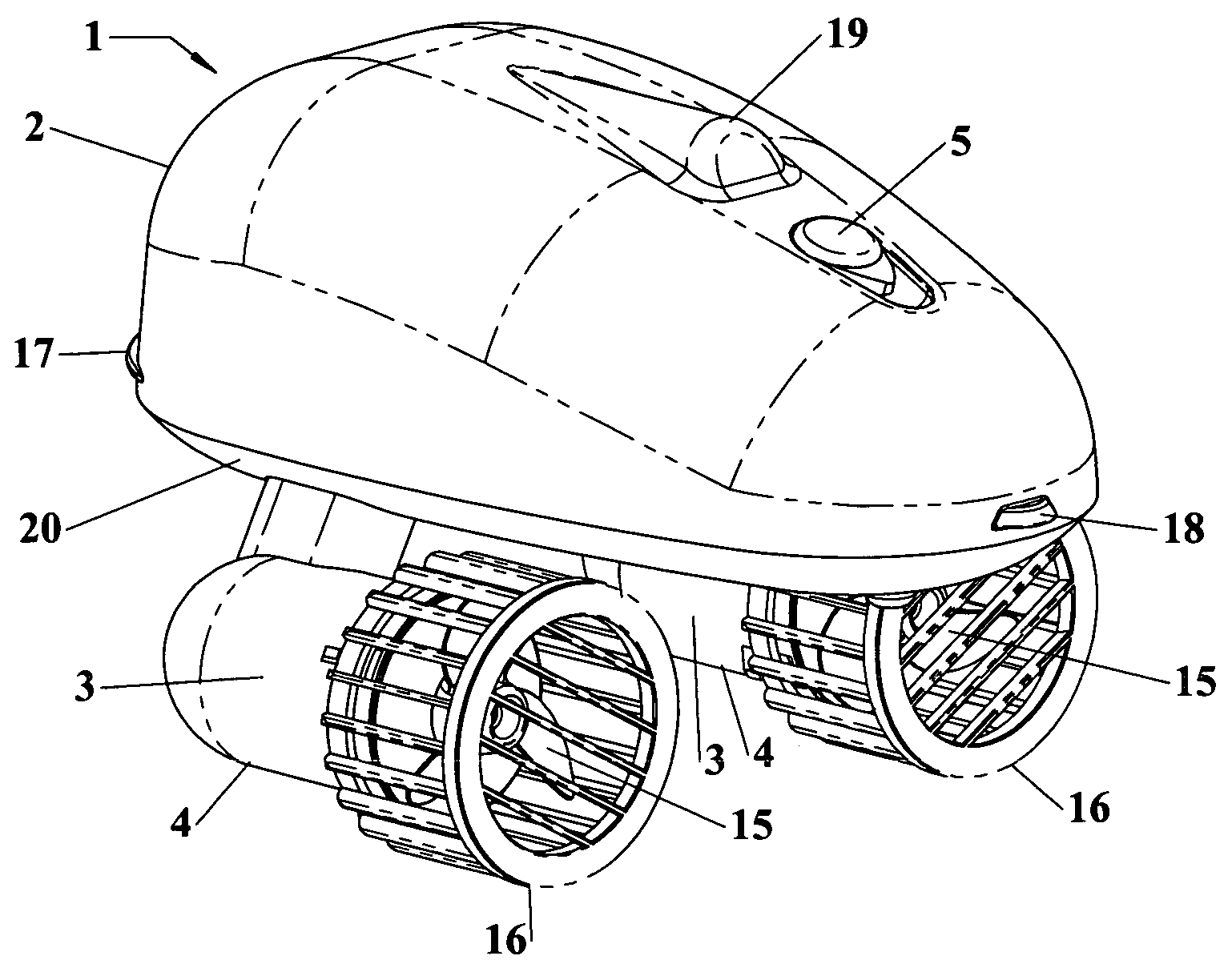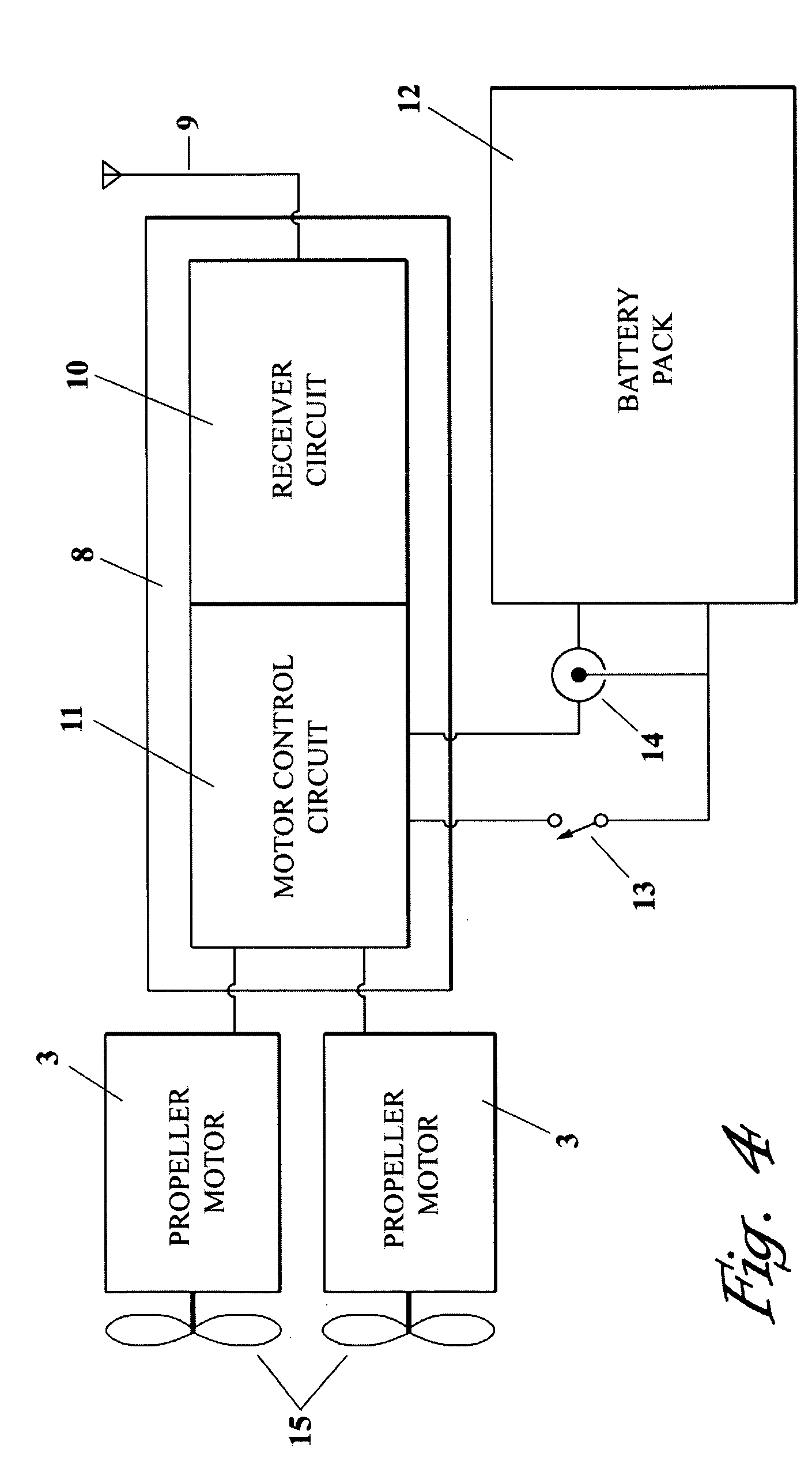Radio Controlled Aquatic Propulsion Device
a radio controlled, propulsion device technology, applied in aquatic toys, acquatic toys, toys, etc., can solve the problems of unusability of the entire toy, boredom with the toy, and limited interest in the toy industry, so as to increase the overall length of the antenna and extend the radio range of the device
- Summary
- Abstract
- Description
- Claims
- Application Information
AI Technical Summary
Benefits of technology
Problems solved by technology
Method used
Image
Examples
Embodiment Construction
[0040] For the purpose of clarity, as is well known to those skilled the art, the terms “watertight” and “sealed” shall imply that any bodies, enclosures, joints, connections or the such, are properly designed to resist water infiltration, by means of standard practices including, but not restricted to the use of sealants, adhesives, face seals, gaskets, o-rings, caps, plugs or any combination of these, or by any means necessary to provide reasonable resistance to the passage of water or other fluids. The term “permanently attached” or related terms, shall imply that any components that are connected in this manner are intended to be irremovable by a person using the device in its intended manner. This may be accomplished by means of various adhesives, or mechanical fasteners including but not restricted to screws, rivets, machine screws, welds, any combination of adhesives and mechanical fasteners, or any other means necessary to provide a permanent connection. Connections consider...
PUM
 Login to View More
Login to View More Abstract
Description
Claims
Application Information
 Login to View More
Login to View More - R&D
- Intellectual Property
- Life Sciences
- Materials
- Tech Scout
- Unparalleled Data Quality
- Higher Quality Content
- 60% Fewer Hallucinations
Browse by: Latest US Patents, China's latest patents, Technical Efficacy Thesaurus, Application Domain, Technology Topic, Popular Technical Reports.
© 2025 PatSnap. All rights reserved.Legal|Privacy policy|Modern Slavery Act Transparency Statement|Sitemap|About US| Contact US: help@patsnap.com



